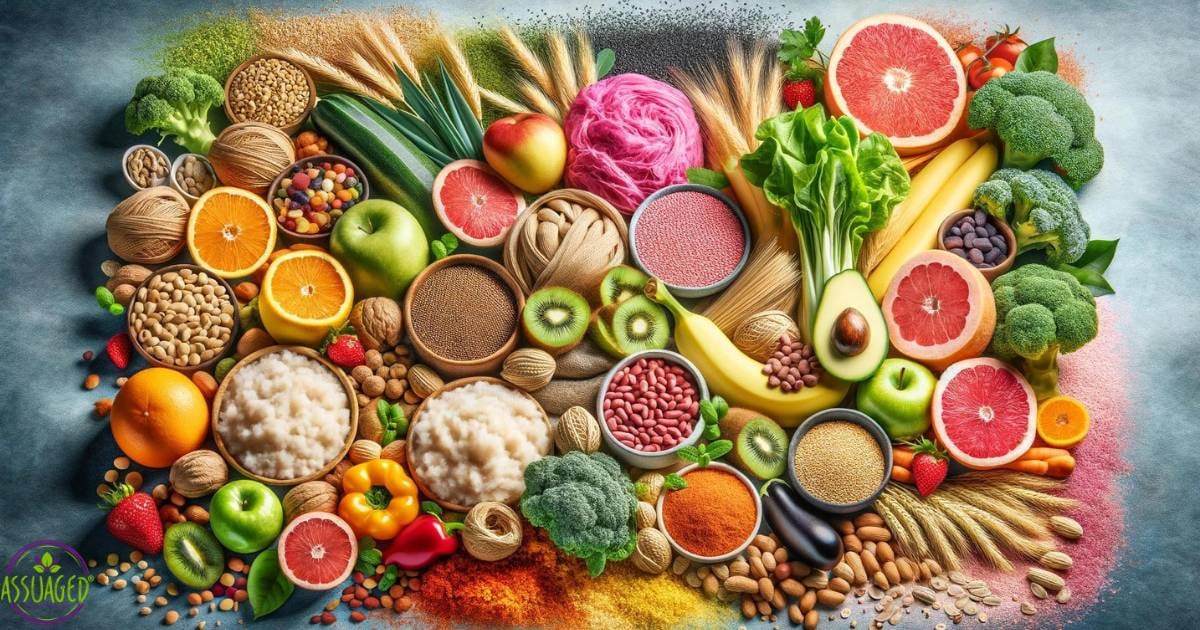Dietary fiber, often overshadowed by more glamorous nutrients, is finally getting the attention it deserves in our health-conscious world. As research progresses, the numerous benefits of dietary fiber, such as improving digestion and reducing chronic disease risks, underscore its importance in our daily diets.[1]
In this blog post, we will explore the multifaceted benefits of dietary fiber, understanding how this humble nutrient can profoundly impact our overall health, aid in weight management, and even influence our mental well-being. Join us as we unravel fiber's essential roles in fostering a healthier lifestyle.
What is Dietary Fiber?
Dietary fiber is a carbohydrate found in plant-based foods that are not digested by human enzymes in the gastrointestinal tract. This essential nutrient plays a crucial role in maintaining overall health.
It is classified into two main types: soluble fiber and insoluble fiber.
Soluble Fiber
Soluble fiber dissolves in water, forming a gel-like substance that helps slow digestion. It can help regulate blood sugar levels and lower cholesterol. Foods rich in soluble fiber include:
- Oats and oatmeal
- Legumes: beans, lentils, and peas
- Nuts and seeds: chia seeds and flaxseeds
- Fruits and vegetables: apples, oranges, pears, carrots, and Brussels sprouts[1]

Insoluble Fiber
Insoluble fiber doesn't dissolve in water. It helps add bulk to the stool and aids in moving food through the digestive system, preventing constipation. Foods high in insoluble fiber include:
- Whole grains: whole wheat bread and brown rice
- Wheat bran
- Various nuts and seeds
- Vegetables: cauliflower, green beans, and potatoes
- Skins of some fruits: avocados and bananas[1]

Benefits of Dietary Fiber
Let's explore the numerous health benefits of dietary fiber:
Digestive Health
Fiber is well known for its ability to prevent or relieve constipation, but its benefits extend much further. It helps maintain bowel health and regulates stool consistency. Adequate fiber intake also helps balance the microbiome, the critical ecosystem of bacteria in your gut.[2]
Weight Management
Fiber aids in weight management by enhancing feelings of fullness. It swells in the stomach and slows digestion, which helps you feel satisfied longer after eating, thus reducing overall calorie intake.[2]
Cardiovascular Health
Fiber has significant cardiovascular benefits. Soluble fiber, in particular, helps lower total blood cholesterol by binding with cholesterol particles and moving them out of the body. Regular fiber consumption can also reduce blood pressure and inflammation, lowering the risk of heart disease.[3]
Diabetes Management
For those managing diabetes, fiber plays a key role by slowing the absorption of sugar, helping to improve blood sugar levels. A high-fiber diet can also improve insulin sensitivity, thus aiding in better long-term glucose management.[3]
Considerations: Go Easy on the Fiber Boost
Increasing fiber intake can sometimes lead to bloating and gas. It's best to start slowly and increase your intake gradually. Drinking plenty of water as you increase fiber can also help mitigate these effects.[4]

Daily Fiber Needs: How Much Fiber Do You Need By Age
These are the recommended daily intake of dietary fiber for different age groups. Including both soluble and insoluble fiber types:
- Men aged 50 and younger: 38 grams per day
- Women aged 50 and younger: 25 grams per day
- Men older than 50: 30 grams per day
- Women older than 50: 21 grams per day[4]
Enhancing your fiber intake is feasible by incorporating a variety of fruits, vegetables, legumes, and grains. For instance: - A slice of whole-wheat bread: about 3 grams of fiber
- A cup of cooked oatmeal: about 4 grams
- A cup of cooked black beans: around 15 grams[5]

While supplements can be helpful occasionally, it is recommended to prioritize natural food sources as they offer a more comprehensive range of essential vitamins and nutrients necessary for a well-rounded diet.
When selecting fiber-rich foods, consider the following tips:
- Opt for fresh, whole foods over canned and processed options, as the latter tend to have reduced fiber content.
- Be aware of added fibers like chicory root or inulin in the ingredients list.
- Incorporate a diverse range of fruits, vegetables, and grains into your diet to maximize the benefits of both soluble and insoluble fibers.
- Consult a pediatrician before giving fiber supplements to children to avoid potential dependency.
Now that you understand the benefits of dietary fiber, it's time to take action and incorporate these nutritious choices into your diet plan. Start today and pave the way toward a healthier lifestyle!















.jpg)